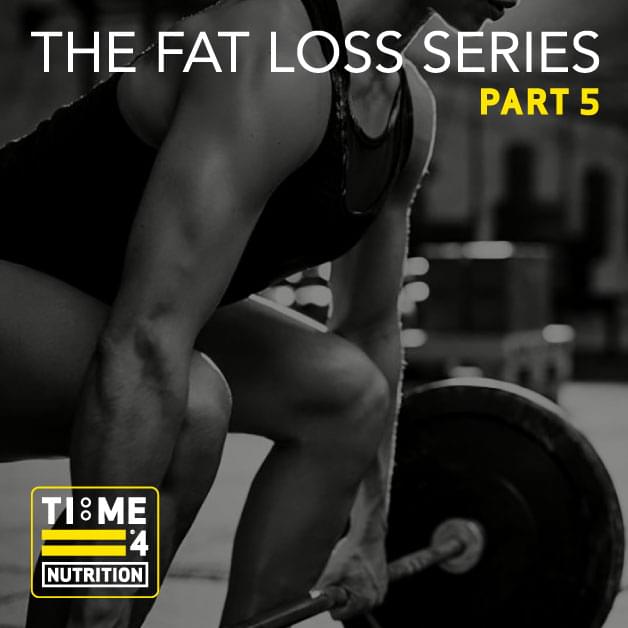TIME 4 FAT LOSS SERIES – PART 5 – Are ‘abs’ made in the kitchen or the gym?
TIME 4 FAT LOSS SERIES
(Click on Nutritional Terms and Reference Numbers in Blue for More Info)
This is the fifth in a series of original articles we will be publishing looking at the science behind fat loss. Join our mailing list to be informed when we have added the latest article.
Diet versus exercise: PART 5 – Are ‘abs’ made in the kitchen or the gym?
Research shows that restrictions in energy intake and increased physical activity (PA) can produce similar reductions in body fat if they produce similar energy deficits (1). For example, if you restrict your energy intake by 3500 kcal less or increase your energy expenditure by the 3500kcal, the net result would be the same, i.e., you would lose a pound of fat.
However, many overweight and obese people are unable to perform enough physical activity to achieve a meaningful reduction in body fat through PA alone. Consequently, a combination of increased PA and moderate energy restriction will produce the best results. A review of weight loss interventions by Curioni and Lourenco (2) found that fat loss programmes that combined diet and exercise resulted in a 20% (~ 3kg) greater weight loss in comparison to diet alone.
Physical activity also provides us with a number of other benefits when we are trying to reduce our levels of body fat. These include:
- Increasing overall size of energy deficit
- Helping to prevent weight regain
- Helping to mobilise and burn fat, especially from the abdominal area
- Helping to blunt the drop in resting metabolism that accompanies fat loss by conserving and even increasing muscle mass
- Reducing reliance on energy restriction to create an energy deficit
- Providing significant health related benefits such as reduction in the risk factors for cardiovascular disease and diabetes
- Helping to offset the deterioration in immune system function that often accompanies weight loss (3)
What is the most effective form of physical activity for fat loss?
While scientific evidence is clear on the benefits of physical activity in a fat loss programme, it is less clear on what is the most effective type for reducing our fat stores. The traditional approach has been to focus on long duration, low intensity steady state cardiovascular exercise, but more recently evidence has emerged to support the use of alternative modes, such as high intensity interval training (HIIT) and metabolic resistance training.
It is important to be mindful that when it comes to selecting a type of physical activity to aid fat loss, a ‘one size fits all’ approach doesn’t work. For example, while a particular type of activity, such as HIIT, which expends large amounts of energy in a short time, may be suitable for someone who is fit and highly motivated, it would not be be appropriate for an obese, unfit person or someone suffering from particular health issues.
Conclusion
Reducing energy intake and increasing energy expenditure can both have a significant impact on our levels of body fat and for most people it is a combination of the two which produces the best long-term results. The science overwhelming supports the use of physical activity in a fat loss programme, but the type you choose to do should not be based solely on its ability to expend the greatest amount of energy in the shortest time, but also its appropriateness for your level of fitness, health status and preferences, because if it’s too demanding or you don’t enjoy it, you’re not likely to maintain it in the long-term.
We’ll look at how much activity and the different types you can do to maximise your fat loss in detail later in this series.
CLICK HERE TO READ: Part 6 – How much physical activity do we need to do to maximise fat loss?
